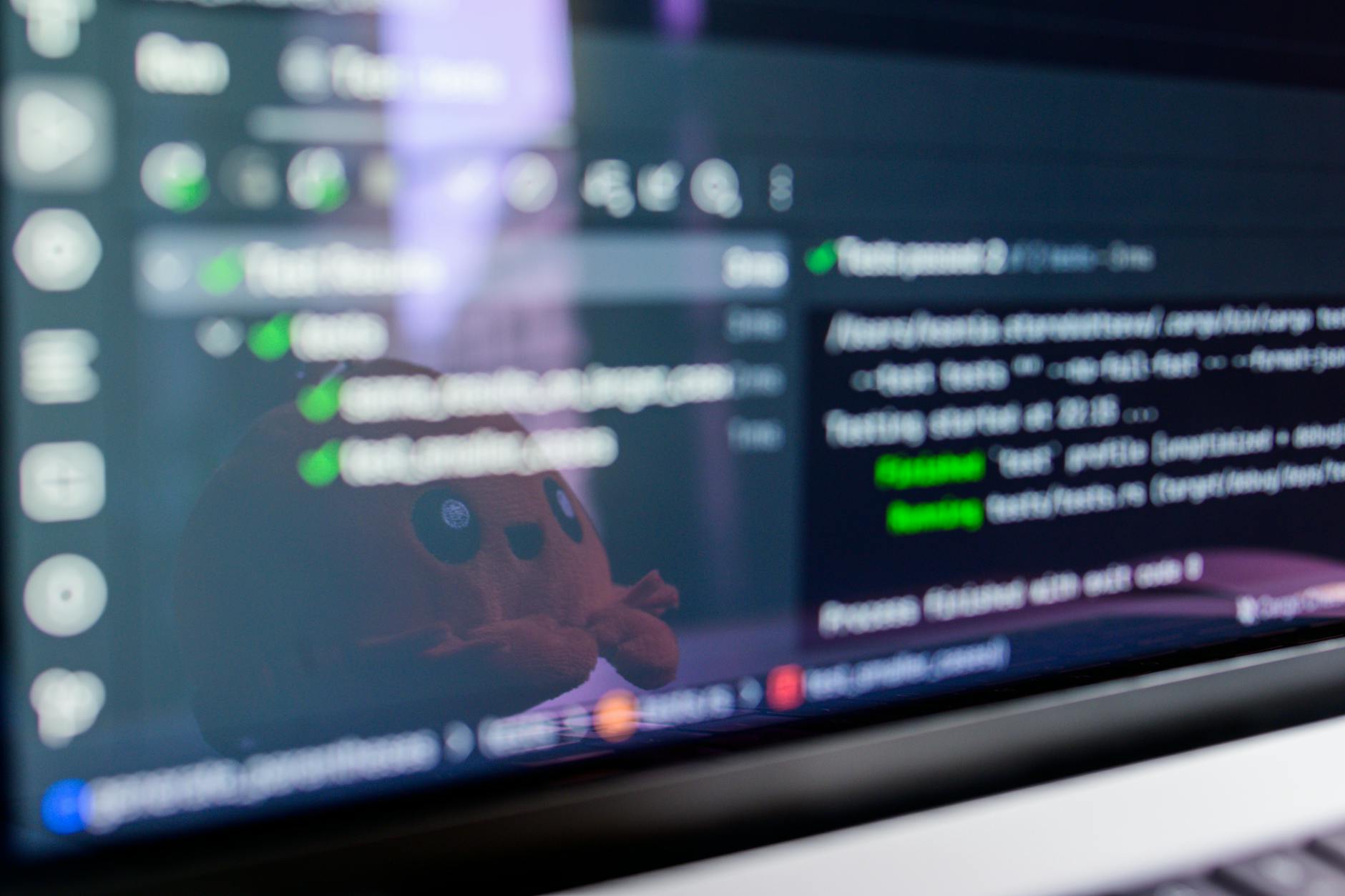Your 2025 Tech Playbook for Business Growth
The Future is Now: Navigating the Top Tech Trends of 2025 to Revolutionize Your Business
Estimated reading time: 21 minutes
Key Takeaways
- 2025 is a pivotal year for digital transformation, marked by the convergence of advanced AI, ubiquitous connectivity, and sophisticated development tools, creating unprecedented innovation opportunities for businesses.
- Web development is evolving towards dynamic, AI-powered web apps, focusing on superior performance with frameworks like Next.js and React, and flexible headless CMS architectures.
- Mobile app development prioritizes efficient cross-platform solutions (Flutter vs. React Native), immersive UI/UX, and deeper AI integration for smarter, more proactive user experiences.
- Cloud computing and DevOps, with widespread adoption of serverless architecture and advanced CI/CD automation, are foundational for agility, scalability, and resilience in modern IT.
- AI automation is becoming a cornerstone for business growth, enhancing customer service through intelligent chatbots, and optimizing complex operations via workflow automation tools like n8n, enabling intelligent delegation and significant cost reduction.
Table of Contents
- The Dawn of 2025: A New Era of Digital Transformation
- Web Development: Building the Future of Online Experiences
- Mobile App Development: Connecting the World on the Go
- Cloud Computing and DevOps: The Backbone of Modern IT
- AI Automation for Businesses: Intelligent Delegation and Growth
- Modern UI/UX Design: Crafting Seamless Digital Experiences
- Digital Transformation Strategies: Navigating the Future
- FAQs (Frequently Asked Questions)
- Conclusion: A Future Forged in Innovation
The digital landscape is a relentless torrent of innovation, constantly reshaping how businesses operate, communicate, and connect with their customers. As we peer into 2025, the pace of technological evolution isn’t just accelerating – it’s converging, creating unprecedented opportunities for those willing to adapt and integrate. From intelligent web experiences and hyper-efficient mobile applications to robust cloud infrastructures and pervasive AI automation, the tools to redefine success are at our fingertips.
This comprehensive guide serves as your essential playbook for the technological frontier of 2025. We’ll break down the most impactful trends across web development, mobile app innovation, cloud computing, DevOps, AI automation, and modern UI/UX design. Whether you’re a business owner aiming for sustainable growth, a developer seeking the next industry standard, or a tech enthusiast eager to understand what’s next, this article will demystify complex concepts and provide actionable insights. Discover how today’s tech can not only accelerate growth and improve performance but fundamentally transform the way your company operates.
At AITechScope, we believe in empowering businesses to thrive in this rapidly evolving environment. Specializing in AI-powered automation, n8n workflow development, and business process optimization, we help companies leverage cutting-edge AI tools and technologies to scale operations, reduce costs, and improve efficiency through intelligent delegation and automation solutions. Let’s embark on a journey to understand and harness the power of the 2025 tech trends.
1. The Dawn of 2025: A New Era of Digital Transformation
The year 2025 isn’t just another calendar mark; it represents a pivotal moment in the ongoing digital revolution. Businesses that embrace this shift will leapfrog competitors, while those that hesitate risk obsolescence. The convergence of advanced AI, ubiquitous connectivity, and increasingly sophisticated development tools is creating an ecosystem ripe for profound innovation. This isn’t just about adopting new software; it’s about fundamentally rethinking business models, customer interactions, and operational efficiencies.
1.1. The Urgency of Staying Ahead: Why 2025 is Critical
The global marketplace is more competitive than ever. Consumers expect seamless, personalized experiences, and employees demand efficient, intuitive tools. In 2025, technology isn’t just a support function; it’s a core driver of strategy and growth. Businesses must move beyond incremental improvements and embrace holistic digital transformation strategies. This means not only understanding 2025 tech trends but actively integrating them into the fabric of their operations. The ability to quickly innovate, scale, and adapt will be the ultimate differentiator. Small businesses, in particular, have an unprecedented opportunity to leverage powerful, accessible technologies to compete with larger enterprises.
1.2. AITechScope’s Vision: Empowering Businesses with Intelligent Automation
AITechScope stands at the forefront of this transformation, offering solutions that bridge the gap between complex cutting-edge technology and practical business application. Our focus on AI automation for businesses and workflow automation tools ensures that companies can effectively delegate repetitive tasks to intelligent systems, freeing up human capital for strategic initiatives. We specialize in developing robust n8n workflows that integrate diverse systems and automate complex processes, driving significant improvements in efficiency and cost reduction. Through intelligent delegation, we empower businesses to not just survive but thrive in the highly automated landscape of 2025.
2. Web Development: Building the Future of Online Experiences
Web development in 2025 is no longer just about building static pages; it’s about crafting dynamic, intelligent, and highly personalized digital ecosystems. The focus keywords like “web development trends,” “AI-powered web apps,” and “Next.js and React performance” underscore a shift towards faster, smarter, and more engaging online presences.
2.1. The Rise of AI-Powered Web Apps and Personalization
Artificial intelligence is fundamentally transforming the web, moving beyond simple chatbots to infuse every layer of the user experience. AI-powered web apps in 2025 will leverage machine learning for predictive analytics, personalized content recommendations, dynamic UI adjustments, and even real-time sentiment analysis to optimize user engagement. Imagine an e-commerce site that not only suggests products based on past purchases but also adapts its layout and promotions based on your current browsing behavior and expressed preferences.
2.1.1. Integrating AI for Smarter User Experiences
Implementing AI features no longer requires a massive data science team. Frameworks and platforms are emerging that allow developers to integrate AI more easily. For instance, businesses are now seeing how even “low-effort AI features” can delight users, from intelligent search functionalities to automated content generation summaries. This integration makes websites feel more intuitive, responsive, and uniquely tailored to each individual.
2.2. Next.js and React: Performance, Scalability, and Developer Experience
The demand for blazing-fast, SEO-friendly, and scalable web applications continues to drive the adoption of modern JavaScript frameworks. Next.js and React performance are at the forefront of this trend, offering unparalleled capabilities for building high-quality web experiences. React provides the fundamental component-based architecture, while Next.js adds crucial features like server-side rendering (SSR), static site generation (SSG), and API routes, significantly improving initial page load times and search engine visibility.
2.2.1. Next.js for Small Businesses: Fast, SEO-Optimized Sites
For small businesses, a fast and visible online presence is non-negotiable. Next.js for small business sites offers a compelling solution. It allows for the rapid development of fast marketing sites that inherently perform well in search engine rankings due to its rendering capabilities. The framework’s modular nature means even a “Next.js beginner guide” can quickly empower developers to build robust, scalable sites without the overhead of complex configurations, making it an ideal choice for startups and growing companies aiming for quick market entry and strong digital presence.
2.2.2. Mastering React Performance: Key Optimization Techniques
Even with powerful frameworks, performance is an ongoing concern. Developers in 2025 are focusing on advanced performance optimization techniques within React and Next.js. This includes code splitting, lazy loading components, memoization with React.memo and useCallback, optimizing image assets, and leveraging content delivery networks (CDNs). Real-world case studies demonstrate how “simple React performance fixes” can reduce page load times by significant margins, improving user retention and conversion rates.
2.3. Headless CMS and WordPress: Flexible Content Delivery
The traditional monolithic content management system (CMS) is giving way to more flexible architectures. Headless CMS WordPress is a prime example of this evolution. By decoupling the content backend (the “head”) from the presentation layer, developers gain immense freedom to use modern front-end frameworks like React or Next.js to deliver content to any device or platform. This approach enables a truly responsive UI design across websites, mobile apps, and even emerging interfaces.
This decoupling offers greater security, scalability, and allows for specialized development teams to work independently on the front-end and back-end. Moreover, it allows businesses to use familiar tools like WordPress for content creation while benefiting from the performance and flexibility of modern JavaScript stacks, often leading to a “WordPress without the bloat” experience.
2.4. Modern UI/UX Design: Intuitive, Responsive, and Inclusive
User Interface (UI) and User Experience (UX) design are evolving beyond aesthetics to become critical strategic components. Modern UI/UX design in 2025 emphasizes intuitive interactions, seamless flows, and, critically, accessibility. Good design anticipates user needs, minimizes friction, and builds trust.
2.4.1. Beyond Aesthetics: Designing for Accessibility and User Flow
The focus is squarely on the user. Responsive UI design is a given, ensuring optimal viewing and interaction across all screen sizes. However, 2025 demands more: designs that prioritize accessibility for users with disabilities, considering factors like color contrast, keyboard navigation, and screen reader compatibility. Practical guides on “Designing Accessible Buttons” are becoming standard learning for all designers, emphasizing that inclusive design is simply good design. This commitment to user-centricity impacts everything from information architecture to micro-interactions, leading to more engaging and effective digital products.
3. Mobile App Development: Connecting the World on the Go
Mobile devices remain the primary gateway to the digital world for billions, and mobile app development 2025 is characterized by a push for performance, seamless cross-platform experiences, and even deeper integration with AI. The debate between native and cross-platform frameworks continues, with new advancements shaping the landscape.
3.1. Flutter vs. React Native in 2025: A Strategic Choice
The perennial question for startups and enterprises alike remains: Flutter vs React Native? Both frameworks offer significant advantages for building cross-platform applications from a single codebase, drastically reducing development time and cost compared to native development. In 2025, their capabilities have matured, making the choice a strategic one based on specific project needs.
3.1.1. Performance, Ecosystems, and Startup Suitability
React Native vs Flutter 2025 is a nuanced discussion. React Native, backed by Facebook, boasts a massive JavaScript developer community and a rich ecosystem of libraries. Its “learn once, write anywhere” philosophy appeals to many. Flutter, Google’s UI toolkit, is lauded for its superior performance, near-native aesthetics, and developer-friendly Dart language, often resulting in more fluid animations and custom UIs. For startups asking “which mobile framework for startups”, Flutter often presents a strong case for its efficiency in building beautiful, performant apps quickly, as demonstrated by guides on “Build a Simple Cross-Platform App with Flutter: From Idea to Play Store.” The choice often boils down to existing team skill sets, performance demands, and the desired level of UI customization.
3.1.2. Building Cross-Platform Apps with Efficiency
Regardless of the chosen framework, the emphasis in 2025 is on efficiency. Both Flutter and React Native contribute to streamlined development cycles, allowing businesses to reach wider audiences on both iOS and Android simultaneously. This efficiency is critical for rapidly prototyping and deploying Minimum Viable Products (MVPs), a crucial strategy for digital innovation for startups.
3.2. Cutting-Edge Mobile UI Trends: Immersive and Intuitive
Mobile app UI trends in 2025 are pushing towards more immersive, personalized, and intuitive experiences. This includes:
- Gestural navigation: Increasingly complex and fluid gestures replacing traditional buttons.
- Micro-interactions: Small, delightful animations that provide feedback and enhance usability.
- Dark Mode optimization: A standard feature, often with dynamic themes.
- Augmented Reality (AR) integration: Blurring the lines between the digital and physical world, especially in e-commerce and gaming.
- Adaptive UIs: Interfaces that learn and adapt to individual user behavior and context.
- Voice user interfaces (VUI): Seamless integration of voice commands and feedback.
3.3. The Role of AI in Mobile App Innovation
AI’s presence in mobile apps is expanding rapidly. From intelligent personal assistants that learn user habits to on-device machine learning for real-time image recognition and language processing, AI is making mobile apps smarter and more proactive. This allows for features like predictive text, intelligent notifications, personalized recommendations, and enhanced security measures, ultimately leading to a more seamless and helpful user experience.
4. Cloud Computing and DevOps: The Backbone of Modern IT
Cloud computing is no longer an option but a foundational necessity. In 2025, cloud computing and DevOps practices are inextricably linked, driving agility, scalability, and resilience across all digital operations. Businesses are leveraging the cloud not just for storage but as a dynamic platform for innovation.
4.1. Embracing Serverless Architecture: Cost-Efficiency and Scalability
Serverless architecture represents a paradigm shift, allowing developers to focus purely on code without managing underlying servers. Cloud providers automatically handle server provisioning, scaling, and maintenance. This approach is gaining immense traction due to its inherent scalability, pay-per-execution pricing model, and reduced operational overhead.
4.1.1. Serverless Backend for Startups: AWS Cost Examples
For startups, serverless backend for startups is a game-changer. It enables them to build robust, scalable applications with minimal upfront infrastructure investment. Using services like AWS Lambda, API Gateway, and DynamoDB, startups can launch sophisticated backends with a pay-as-you-go model that keeps costs extremely low during initial phases. A “Serverless on AWS: Create a Cost-Efficient Backend That Scales Automatically” approach can significantly reduce overhead compared to traditional server management, offering a powerful example of serverless AWS cost example benefits where costs often align directly with actual usage, minimizing idle resource expenditure.
4.2. DevOps Best Practices and CI/CD Automation for Small Teams
DevOps best practices emphasize collaboration, automation, and continuous delivery. In 2025, this isn’t just for large enterprises. CI/CD automation is becoming standard even for CI CD small teams, enabling faster, more reliable software releases.
4.2.1. GitHub Actions: Streamlining Deployments
Tools like GitHub Actions have democratized CI/CD automation. A “GitHub Actions deploy tutorial” can guide small teams through setting up automated workflows for testing, building, and deploying their applications directly from their code repository. This dramatically reduces manual errors, speeds up the release cycle, and allows developers to focus on writing code rather than managing deployments, aligning with the ethos of “Automated Deployments Without the Headache.”
4.3. Microservices Architecture: Agility and Resilience
Microservices architecture continues to gain ground as a preferred approach for building complex applications. By breaking down applications into small, independent services, development teams gain agility, as each service can be developed, deployed, and scaled independently. This enhances resilience, as the failure of one service doesn’t necessarily bring down the entire application. While not always suitable for every project (“Micro Frontends: When They Help and When They Hurt”), for large, evolving systems, microservices provide unparalleled flexibility.
4.4. Cloud Migration Strategies: Moving Beyond Legacy Systems
Many businesses still grapple with legacy systems. In 2025, robust cloud migration strategies are essential for modernization and competitive advantage. Whether it’s a lift-and-shift, re-platforming, or re-architecting approach, moving applications and data to the cloud unlocks scalability, cost efficiencies, and access to advanced cloud services. The challenge lies in doing this “without breaking it,” requiring meticulous planning, phased migration, and robust testing. The increasing energy demands of AI data centers also push for more efficient and sustainable cloud solutions, with companies like Meta investing heavily in solar power to support their AI infrastructure, indicating a growing emphasis on green cloud practices.
5. AI Automation for Businesses: Intelligent Delegation and Growth
Artificial intelligence is no longer a futuristic concept; it is an immediate, actionable tool for business transformation. AI automation for businesses is rapidly becoming a cornerstone of efficiency, cost reduction, and strategic growth. AITechScope, with its specialization in AI-powered virtual assistant services and n8n workflow development, is at the forefront of this revolution.
5.1. AI Chatbots and Conversational AI: Enhancing Customer Service
AI chatbots for customer service are evolving far beyond simple rule-based systems. In 2025, chatbot automation will leverage advanced natural language processing (NLP) and machine learning to provide highly intelligent, empathetic, and personalized customer interactions. They can handle complex queries, resolve issues, guide users through processes, and even provide proactive support, often indistinguishable from human agents.
5.1.1. Real-World Chatbot Workflows for Small Businesses
For small businesses, integrating AI chatbots can significantly enhance customer support without the need for large call centers. Practical examples include chatbots for appointment scheduling, answering FAQs, processing simple orders, or qualifying leads. These “real workflows that work” allow small businesses to “save time” and provide 24/7 support, greatly improving customer satisfaction and freeing up staff for more complex tasks.
5.2. Workflow Automation Tools and n8n: Beyond Repetitive Tasks
The real power of AI in business lies in its ability to automate entire workflows. Workflow automation tools like n8n, a specialty of AITechScope, allow businesses to connect various applications and services, creating intelligent, automated processes. This goes “beyond repetitive tasks” to optimize complex operations, from lead nurturing and customer onboarding to data synchronization and internal reporting.
5.2.1. AI’s Role in Process Optimization (AITechScope’s Specialization)
AITechScope excels in leveraging AI for business process optimization. By integrating AI models into n8n workflows, we enable intelligent delegation, where systems can make decisions, analyze data, and execute tasks autonomously. This not only “saves 5–10 hours/week” on manual tasks but also introduces a level of precision and speed that human efforts alone cannot match. Our solutions help businesses scale operations, reduce costs, and improve overall efficiency by intelligently automating even intricate, multi-step processes.
5.3. Enterprise Digital Adoption: Scaling with AI
For larger organizations, enterprise digital adoption of AI is about integrating these technologies strategically across all departments. From HR and finance to marketing and operations, AI is being deployed to automate everything from expense reporting to predictive sales forecasting. This broad adoption is crucial for achieving true digital transformation and maintaining a competitive edge. CEOs are finding “5 bold ways” to use AI beyond mere automation, leveraging it for strategic insight, innovation, and even shaping company culture.
5.4. The Future of AI: From Smart Glasses to Audiobook Creation
The frontiers of AI continue to expand rapidly. In 2025, we’re seeing AI become embedded in new, pervasive ways:
- Creative Content Generation: Companies like ElevenLabs are demonstrating AI’s prowess in content creation, allowing authors to publish AI-generated audiobooks on their platform. This signals a future where AI tools empower creators with new avenues for content production and distribution, blurring the lines between human and synthetic creativity.
- Pervasive AI Assistants: The concept of “always-on” AI is moving from science fiction to reality. Startups are launching AI smart glasses that can listen and record conversations, pushing the boundaries of personal AI assistants. While raising important ethical questions about privacy, these devices highlight the growing ubiquity and personal integration of AI into daily life.
6. Modern UI/UX Design: Crafting Seamless Digital Experiences
While touched upon in web and mobile contexts, modern UI/UX design deserves its own dedicated focus as a cross-cutting discipline critical for all digital products. It’s the bridge between powerful technology and human usability.
6.1. Responsive UI Design: Adapting to Every Device
As users interact with digital content across an ever-growing array of devices – from smartwatches to ultra-wide monitors – responsive UI design is no longer a luxury but a fundamental requirement. Designs must fluidly adapt to different screen sizes, orientations, and input methods, ensuring a consistent and optimal experience regardless of the platform. This necessitates a mobile-first approach during the design and development process.
6.2. User-Centric Principles: Empathy in Design
At its core, modern UI/UX design is about user-centric principles. This involves deep user research, persona development, journey mapping, and continuous testing to truly understand user needs and pain points. Empathy in design means creating interfaces that are not just functional but also delightful, intuitive, and accessible to the widest possible audience. This is reflected in the focus on clear information hierarchy, consistent navigation, and meaningful feedback.
6.3. The Impact of AI on UI/UX
AI is also beginning to profoundly impact UI/UX design itself. AI tools can analyze user behavior data to identify patterns, predict design improvements, and even generate design variations. This allows designers to focus on higher-level strategic thinking while AI assists with repetitive tasks and data-driven optimizations, leading to more intelligent and adaptive interfaces. The ultimate goal is to create truly intuitive experiences that anticipate user needs before they even articulate them.
7. Digital Transformation Strategies: Navigating the Future
True digital transformation strategies go beyond adopting individual technologies; they involve a holistic rethinking of an organization’s operations, culture, and value proposition. In 2025, this transformation is essential for sustained competitive advantage.
7.1. Tech Innovation for Small Businesses: Actionable Steps
Small businesses often perceive digital transformation as an insurmountable challenge due to limited resources. However, tech innovation for small businesses is more accessible than ever. The key is to start small and scale intelligently.
7.1.1. Digital Transformation on a Budget: 7 Steps Small Companies Can Start Today
Companies can begin their digital transformation journey by:
- Automating repetitive tasks: Leverage tools like n8n (AITechScope’s specialty) or Zapier for workflow automation.
- Adopting cloud-based tools: Migrate to SaaS solutions for CRM, accounting, and communication.
- Enhancing online presence: Build a fast, SEO-optimized website using frameworks like Next.js.
- Implementing AI chatbots: Improve customer service and lead generation.
- Leveraging data analytics: Make informed decisions with accessible analytics tools.
- Securing data: Invest in basic cybersecurity measures.
- Fostering a digital-first culture: Encourage employees to embrace new technologies.
These “7 Steps Small Companies Can Start Today” prove that digital transformation on a budget is not only possible but imperative.
7.2. Performance Optimization Techniques Across the Stack
Regardless of the technology, performance optimization techniques are crucial for every layer of the tech stack. From front-end web apps (as discussed with React and Next.js) to backend serverless functions and database queries, speed and efficiency directly impact user experience, SEO, and operational costs. Continuous monitoring, profiling, and iterative optimization are essential for maintaining peak performance in 2025.
7.3. Choosing the Right Tech Stack for Modern Businesses
Selecting the appropriate tech stack for modern businesses is a strategic decision. It involves balancing current needs with future scalability, developer skill sets, and cost implications. For web applications, a combination of Next.js/React, a headless CMS, and a serverless backend might be ideal. For mobile, the choice between Flutter and React Native depends on specific project requirements. The ultimate goal is to build a cohesive, agile, and resilient technological foundation that supports innovation and growth.
FAQs (Frequently Asked Questions)
Q1: What are the biggest tech trends for 2025?
The biggest tech trends for 2025 include:
- Pervasive AI Automation: Deep integration of AI into business processes, customer service (AI chatbots), and creative fields (AI-generated content).
- Advanced Web Development: AI-powered web apps, superior performance with frameworks like Next.js and React, and flexible headless CMS architectures.
- Evolved Mobile App Development: High-performing cross-platform apps (Flutter vs. React Native), immersive UI/UX, and AI integration for smarter mobile experiences.
- Robust Cloud & DevOps: Widespread adoption of serverless architecture, advanced CI/CD automation for small teams, and microservices for scalable solutions.
- User-Centric UI/UX: Hyper-responsive, accessible, and AI-informed design principles.
Q2: How can small businesses leverage AI and automation?
Small businesses can leverage AI and automation by:
- Implementing AI chatbots for customer service to handle FAQs and support.
- Automating internal workflows (e.g., lead qualification, data entry, reporting) using workflow automation tools like n8n.
- Using AI for personalized marketing and content generation.
- Adopting virtual assistants (like those offered by AITechScope) for intelligent delegation of administrative tasks.
- Utilizing AI-powered analytics to gain insights from customer data.
Q3: Is Next.js suitable for a fast marketing site?
Yes, Next.js is highly suitable for a fast marketing site. Its built-in features like server-side rendering (SSR) and static site generation (SSG) ensure incredibly fast page load times and excellent SEO performance. It allows for quick development of highly optimized and scalable marketing websites, making it a top choice for small businesses looking to establish a strong online presence quickly and efficiently.
Q4: Which mobile framework is better for startups in 2025: Flutter or React Native?
Both Flutter and React Native are excellent choices for startups in 2025 for building cross-platform mobile apps.
- Flutter often excels in performance, custom UI, and rapid development due to its rendering engine and Dart language. It’s often preferred for apps requiring complex animations or a unique visual style.
- React Native benefits from a vast JavaScript ecosystem and community, making it easier for teams with existing web development skills to pick up.
The “better” choice depends on your team’s existing skill set, specific performance requirements, and desired level of UI customization.
Q5: What is serverless architecture and how does it benefit startups?
Serverless architecture is a cloud execution model where the cloud provider dynamically manages server allocation and provisioning. Developers write and deploy code (functions) without worrying about servers.
For startups, it offers immense benefits:
- Cost-Efficiency: You only pay for the compute resources consumed during code execution, significantly reducing costs for applications with fluctuating traffic.
- Automatic Scalability: Applications automatically scale up or down based on demand, eliminating the need for manual server management.
- Reduced Operational Overhead: Startups can focus entirely on development, freeing up resources from server maintenance and infrastructure management.
- Faster Time-to-Market: It enables quicker deployment of features and products, crucial for rapid iteration and innovation.
Conclusion: A Future Forged in Innovation
The year 2025 promises to be a landmark period in digital evolution. The confluence of advanced web development techniques, sophisticated mobile app innovation, robust cloud and DevOps practices, pervasive AI automation, and refined UI/UX design principles is creating a landscape brimming with possibilities. For businesses, this isn’t just about keeping up; it’s about actively leveraging these 2025 tech trends to redefine their capabilities, enhance customer experiences, and unlock unprecedented growth.
From the seamless performance of Next.js sites and the cross-platform agility of Flutter or React Native apps, to the cost-efficiency of serverless backends and the transformative power of AI-driven workflows, the tools for success are evolving at breakneck speed. Digital transformation strategies are no longer optional but essential, and even small businesses can initiate meaningful changes with targeted tech innovation.
At AITechScope, we are committed to being your partner in this journey. By specializing in AI-powered automation and intelligent delegation through n8n workflow development, we provide the expertise and solutions necessary to navigate this complex landscape. We empower businesses to harness these cutting-edge technologies, optimize their processes, reduce operational costs, and achieve scalable efficiency. Embrace the future with confidence – the power to revolutionize your business is now.







